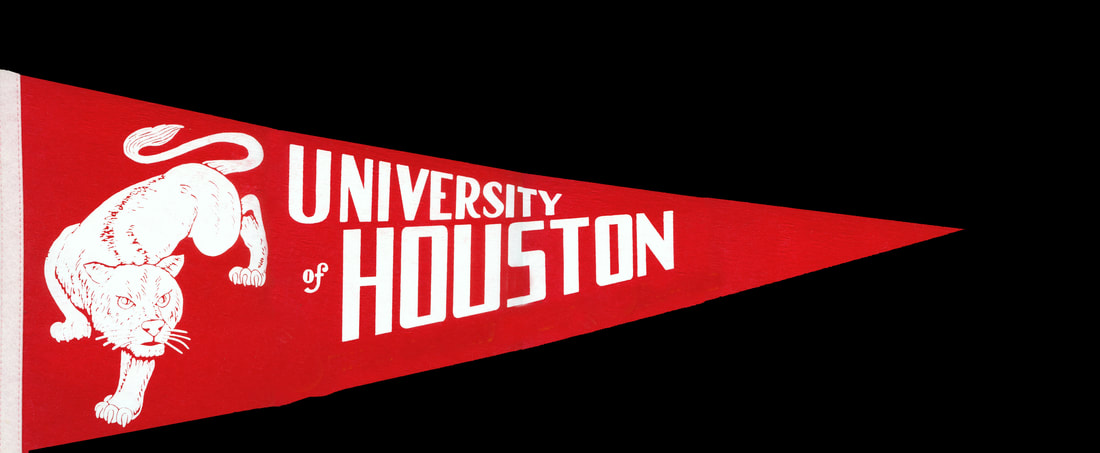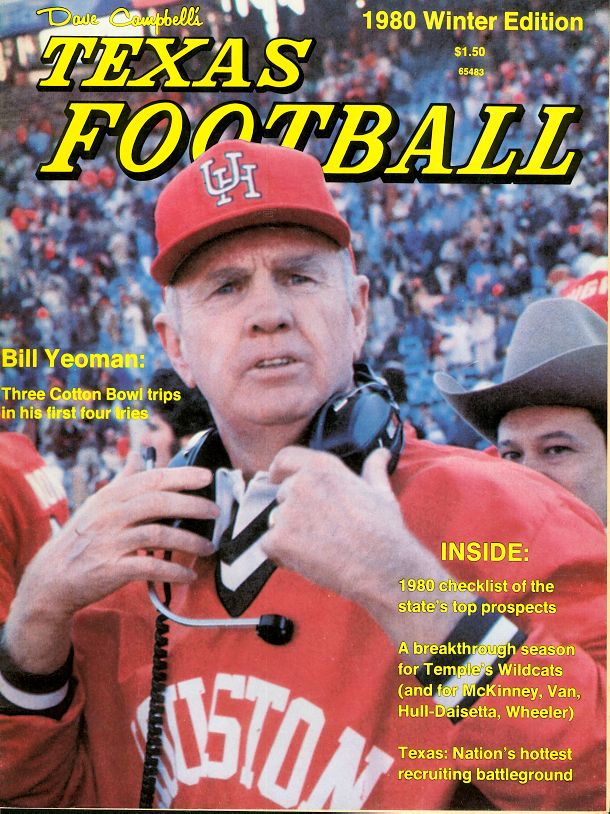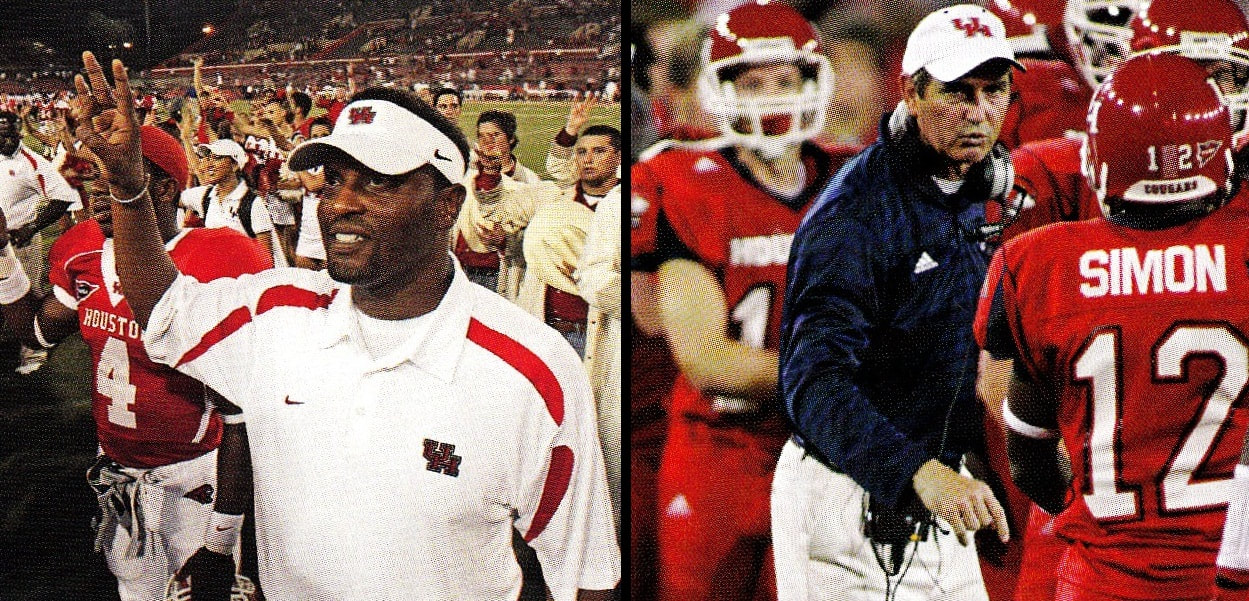Long derisively referred to as, “Cougar High,” the University of Houston might have a better nickname – Coach High. While UH may not have the long list of names or the success of many other Texas schools, it has produced some high quality candidates to base its argument. The Student The first submission for UH’s coaching legacy, never coached a down from the Cougar sideline. In fact, as far as college goes, he is far more recognizable and memorable for his time at the University of Texas, where he played, than he is for his time as a Cougar. Tom Landry graduated from the University of Houston in 1952 with a bachelor’s degree in industrial engineering. Although he played and coached for the New York Giants at the time, Landry and his family would spend the off-season in Houston as Tom worked for Cameron Ironworks and pursued his engineering degree. Of course, Landry would go on to become one of the most recognizable coaches in football history. Between 1966 and 1983, the Cowboys advanced to the NFL playoffs 17 times in 18 seasons, appeared in five Super Bowls and won two world championships. Today, Landry is remembered as one of football’s greatest innovators bringing new approaches to defense, offense, scouting, drafting and more. However, to be considered a part of the UH coaching argument, there would need to be evidence that UH influenced Landry’s tenure as a head coach. Well, fortunately, such evidence exists. When asked about whether or not his time at Houston impacted Landry’s coaching philosophy, his son, Tom Landry Jr., was quick to reply, ““I think there’s no doubt about it. That was his answer. That was how he analyzed the game—as an engineer. And he said so many times.” The Master While the University of Houston influenced our first coach, the second coach influenced the University of Houston. Bill Yeoman was the first Houston Cougar to ever be inducted into the College Football Hall of Fame when he was selected as a member of the 2001 class. Yeoman led the Cougars from 1962 to 1986 ushering significant changes to UH football. Yeoman’s first innovation came when he invented and installed the veer option offense, revolutionizing the football world. Utilizing the split-back option system, Yeoman’s Cougars led the nation in total offense for three consecutive years during the 1960s. In 1968, Houston was the highest scoring team in the country at 42.5 points per game and would become the last team to score 100 points in the highest division of college football when they defeated Tulsa 100-6. During this period, Yeoman would make his second major change to UH football and, arguably, his most important. In 1964, Yeoman signed Warren McVea from San Antonio. What was so important about McVea? He was the first African-American football player in the state of Texas to receive an athletic scholarship to a major program. The move by the Houston Athletic Department put them several years ahead of their competitors in the Southwest Conference. In 1976, Yeoman would again usher in a new era for Cougar football when the team made the move to the SWC. Like many of his endeavors, Yeoman shocked the football world and led UH to the SWC title and the Cotton Bowl in year one. As SWC champions, UH received a bid to the Cotton Bowl where the Cougars dispatched of the #4 Maryland Terrapins, 30-21. Over his career, Yeoman posted a record of 160-108-8 with a bowl record of 6-4-1. When Bill took over at Houston, the team was a relatively unknown program that had only been to one bowl game in its entire history. When he left, the Cougars had won four conference titles and become a member of one of college football’s most storied conferences. Yeoman coached 46 All-Americans and 69 players that would eventually go on to compete in the NFL; oh, he also coached number three on our list. The Most Texas Texan ESPN’s SportsCenter recently called coach number three, “The most Texas Texan in Texas' most Texan town." Art Briles began his collegiate coaching career as a position coach under Mike Leach at Texas Tech in 2000. From that first year to his last with Tech, Briles raised the Red Raiders rushing average from 66.4 yards per game to 99.6 yards per game. By the way, (as a sign of his ability to spot underrated talent) do you know who the first kid Briles recruited to Tech was? Wes Welker. Briles would leave Tech in 2002 to become the head coach at the University of Houston, his first job as the head man on a college football team. The Cougars had just endured an 8-26 record under previous head coach, Dana Dimel. Briles made an immediate impact. In his first season, the Briles led Cougars would go 7-5 and receive a bid to the Sheraton Hawai’i Bowl. The winning ways would continue, as Art would amass 34-28 record at Houston over a five year span including 10-4 and 8-4 seasons. In those five years, Briles would also lead the Cougars to four bowl games; however, he wouldn’t coach in the last one as he left to take over Big 12 doormat Baylor. Akin to what he accomplished at Houston, Briles worked to turn around a struggling program. The Bears hadn’t seen a winning season since 1995 and now they are a national power. Briles has employed lessons learned from his early coaching career to lead Baylor to back-to-back conference titles and earn the Bears a 2015 top 5 pre-season ranking. The X Factor The first three names on this list have well documented success. Landry is a Pro-Football Hall of Famer, Yeoman is a College Football Hall of Famer and Briles almost assuredly will join Yeoman when his career is over. The last name on this list may well join their ranks but that is yet to be seen. In 2008, Kevin Sumlin joined the Houston Cougars as Art Briles replacement. While Sumlin only spent four years at Houston he made a strong impact. He continued the winning ways that Briles established posting a 35-17 record over the four years and earning three bowl bids. In 2011, his final year, Sumlin did something that even Briles didn’t manage – he had the Cougars ranked at the end of the season. Sumlin, of course, left to take the head position at Texas A&M leading the Aggies into their first year of competition in the SEC. The first year was legendary, leading TAMU to an 11-2 record, a Heisman winner and a bowl victory over Oklahoma. However, each year since, Sumlin and the Aggies have regressed in total wins. If Sumlin is able to rebound utilizing his high-ranking recruiting classes and top-flight facilities, he will likely finish with a career worthy of College Football Hall of Fame honors. A head coaching career that began at the University of Houston. Conclusion This is by no means an open and shut case. Many schools and their coaches can put up a great argument (as illustrated by A&M at the beginning of this article). However, Houston has played an instrumental role in these four coaches lives and, if Sumlin reaches his potential, all four will be remembered as some of the greatest coaches in Texas’ history. Some may even argue that these aren’t the greatest four coaches in Houston’s history, perhaps selecting Jack Pardee instead of Sumlin. Tom Herman may even be a better argument to join this list if he can capitalize on the excitement he has created in Houston since moving from the Ohio State sidelines to the Cougar head spot. Regardless, hopefully this offers a new look at the state of Texas’ best coaching tradition and gotten you excited for the upcoming season. Go Coogs!
Comments are closed.
|
Archives
November 2023
Categories |
Contact1108 S. University Parks Dr.
Waco, Texas 76706 |
© Texas Sports Hall of Fame. 501(c)(3). All rights reserved.




 RSS Feed
RSS Feed
